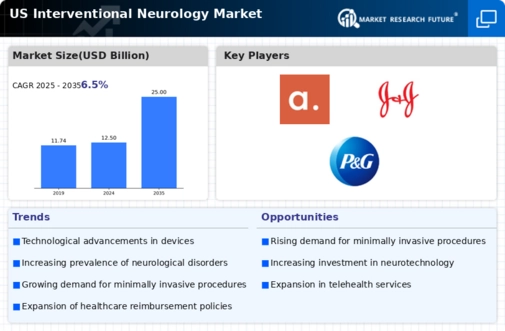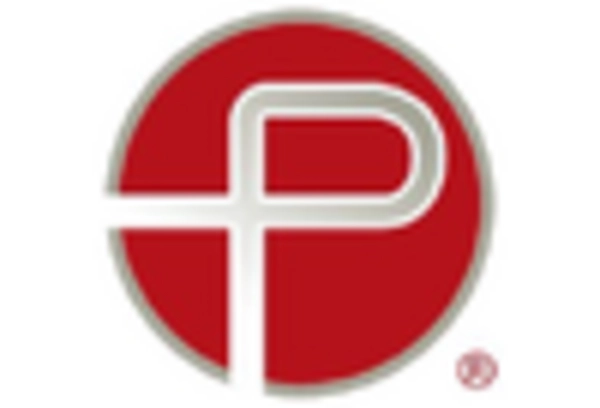Regulatory Support and Reimbursement Policies
Regulatory support and favorable reimbursement policies are crucial drivers for the interventional neurology market. The US Food and Drug Administration (FDA) has streamlined the approval process for innovative neurology devices, facilitating quicker access to market. Additionally, reimbursement policies from Medicare and private insurers are increasingly covering advanced interventional procedures, making them more accessible to patients. This financial support encourages healthcare providers to adopt new technologies and techniques, thereby expanding the interventional neurology market. As reimbursement frameworks evolve to include more comprehensive coverage for these procedures, the market is likely to see sustained growth in the coming years.
Rising Investment in Research and Development
Investment in research and development (R&D) within the interventional neurology market is on the rise, as companies seek to innovate and improve treatment options. This trend is fueled by the need for novel therapies to address complex neurological conditions. The National Institutes of Health (NIH) has allocated substantial funding towards neurological research, with expenditures exceeding $1 billion annually. Such investments are likely to lead to breakthroughs in interventional techniques and devices, enhancing the overall efficacy of treatments. As R&D continues to advance, the interventional neurology market is expected to benefit from the introduction of new products and technologies that address unmet medical needs.
Advancements in Imaging and Diagnostic Technologies
Innovations in imaging and diagnostic technologies are significantly impacting the interventional neurology market. Enhanced imaging modalities, such as MRI and CT angiography, allow for more accurate diagnosis and treatment planning, leading to improved patient outcomes. The integration of artificial intelligence in imaging analysis is also emerging, potentially increasing the efficiency of diagnostic processes. As these technologies become more widely adopted, they are expected to drive the growth of the interventional neurology market. The market for imaging technologies in neurology is projected to grow at a CAGR of 7% through 2027, reflecting the increasing reliance on advanced diagnostics in treatment protocols.
Increasing Demand for Minimally Invasive Procedures
The interventional neurology market is experiencing a notable shift towards minimally invasive procedures, driven by patient preference for reduced recovery times and lower complication rates. As techniques such as endovascular therapy gain traction, the market is projected to grow significantly. According to recent data, minimally invasive procedures account for approximately 60% of all neurosurgical interventions in the US. This trend is likely to continue, as advancements in imaging technologies and catheter-based techniques enhance procedural efficacy. The growing acceptance of these methods among healthcare providers further supports the expansion of the interventional neurology market, as they seek to offer patients safer and more effective treatment options.
Aging Population and Increased Healthcare Expenditure
The aging population in the US is a critical driver for the interventional neurology market. As individuals age, the prevalence of neurological disorders such as stroke and dementia rises, necessitating advanced treatment options. The US Census Bureau projects that by 2030, approximately 20% of the population will be over 65 years old. This demographic shift is accompanied by increased healthcare expenditure, with the Centers for Medicare & Medicaid Services estimating that national health spending will reach $6 trillion by 2027. Consequently, the interventional neurology market is poised for growth as healthcare systems adapt to meet the needs of an older population requiring specialized neurological care.

















Leave a Comment